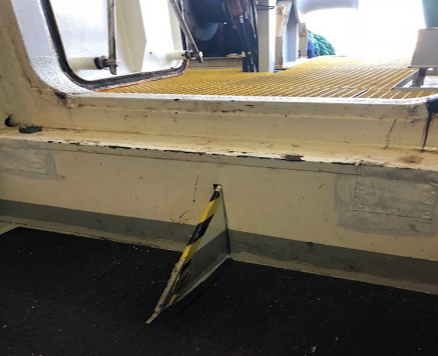IMCA published a safety flash concerning the accidents that take place in vessel machinery spaces. In the specific safety flash, two crew members were slightly injured. The injury was caused due to uneven surfaces that caused one crew member twisting their foot, and the other one having a medical treatment to the shoulder.
The Incident
A crew member entered the emergency generator room, stepped on an exposed support gusset, and twisted their left foot and ankle resulting in a lost time injury (LTI).
On another occasion, a crew member on routine watch keeping duty tripped on an uneven surface in the upper bow thruster room, causing a medical treatment case, to the shoulder.
Probable Causes
According to results from the investigation, depending on the age and design of the vessel, many latent hazards have been present, usually from design/construction, or because of engineering changes during the life of the vessel. Most of the time, these hazards remain latent and don’t result to injuries.
In the specific incident, uneven surfaces were the cause of both incidents. One was due to a redundant support gusset located on top of a step and the other because of multiple uneven walkways.
Lessons Learned
- Including human factors in the design of vessels;
- Eliminating uneven surfaces;
- Applying management of change (MoC) to any engineering design changes and when not possible to eliminate, use of signage (‘tiger tape’) to identify uneven surfaces;
- In addition, keeping all access ways clear, use of non-skid paint, keep surfaces clean of grease/dirt, ensure lighting is adequate and wear appropriate footwear and personal protective equipment (PPE) that is in good condition and fastened properly.
Actions Taken
According to IMCA, a fleet wide latent hazard hunt was conducted, focused on all lessons learned.
Many similar hazards were identified and rectified immediately and/or included in maintenance schedules including an MoC process.



































































